3,6-Dihydroxyphthalonitrile
Synonym(s):2,3-Dicyano-1,4-hydroquinone;2,3-Dicyanohydroquinone;3,6-Dihydroxyphthalonitrile;DCH
- CAS NO.:4733-50-0
- Empirical Formula: C8H4N2O2
- Molecular Weight: 160.13
- MDL number: MFCD00001790
- EINECS: 225-241-0
- SAFETY DATA SHEET (SDS)
- Update Date: 2023-06-08 17:06:38
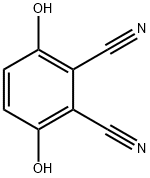
What is 3,6-Dihydroxyphthalonitrile?
Chemical properties
khaki-colored to brown crystalline powder or
The Uses of 3,6-Dihydroxyphthalonitrile
2,3-Dicyanohydroquinone was used in the synthesis of phthalonitrile-3,6-ditriflate. It is a fluorescent dye and was used in determination of intracellular pH and calcium in avian neural crest cells.
Properties of 3,6-Dihydroxyphthalonitrile
| Melting point: | >230 °C (dec.) (lit.) |
| Boiling point: | 286.01°C (rough estimate) |
| Density | 1.3848 (rough estimate) |
| refractive index | 1.4900 (estimate) |
| storage temp. | Store below +30°C. |
| form | Crystalline Powder or Needles |
| pka | 6.21±0.23(Predicted) |
| color | Khaki to brown |
| Water Solubility | Soluble in hot water |
| BRN | 2101249 |
| CAS DataBase Reference | 4733-50-0(CAS DataBase Reference) |
Safety information for 3,6-Dihydroxyphthalonitrile
| Signal word | Warning |
| Pictogram(s) |
 Exclamation Mark Irritant GHS07 |
| GHS Hazard Statements |
H315:Skin corrosion/irritation H319:Serious eye damage/eye irritation |
| Precautionary Statement Codes |
P264:Wash hands thoroughly after handling. P264:Wash skin thouroughly after handling. P280:Wear protective gloves/protective clothing/eye protection/face protection. P302+P352:IF ON SKIN: wash with plenty of soap and water. P305+P351+P338:IF IN EYES: Rinse cautiously with water for several minutes. Remove contact lenses, if present and easy to do. Continuerinsing. P332+P313:IF SKIN irritation occurs: Get medical advice/attention. P337+P313:IF eye irritation persists: Get medical advice/attention. |
Computed Descriptors for 3,6-Dihydroxyphthalonitrile
New Products
Tert-butyl bis(2-chloroethyl)carbamate 4-Methylphenylacetic acid N-Boc-D-alaninol N-BOC-D/L-ALANINOL 3-Morpholino-1-(4-nitrophenyl)-5,6-dihydropyridin- 2(1H)-one Furan-2,5-Dicarboxylic Acid Tropic acid 1,1’-CARBONYLDIIMIDAZOLE DIETHYL AMINOMALONATE HYDROCHLORIDE R-2-BENZYLOXY PROPIONIC ACID 1,1’-CARBONYLDI (1,2-4 TRIAZOLE) N-METHYL INDAZOLE-3-CARBOXYLIC ACID (2-Hydroxyphenyl)acetonitrile 4-Bromopyrazole 5-BROMO-2CYANO PYRIDINE 5,6-Dimethoxyindanone 5-broMo-2-chloro-N-cyclopentylpyriMidin-4-aMine 2-(Cyanocyclohexyl)acetic acid 4-methoxy-3,5-dinitropyridine 2-aminopropyl benzoate hydrochloride 1-(4-(aminomethyl)benzyl)urea hydrochloride diethyl 2-(2-((tertbutoxycarbonyl)amino) ethyl)malonate tert-butyl 4- (ureidomethyl)benzylcarbamate Ethyl-2-chloro((4-methoxyphenyl)hydrazono)acetateRelated products of tetrahydrofuran

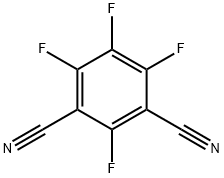

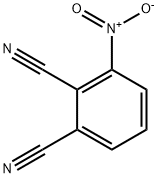
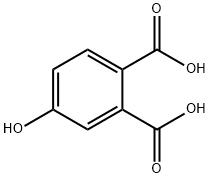
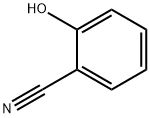
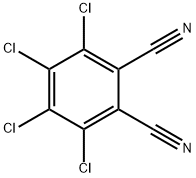
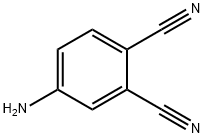
You may like
-
 2,3-Dicyanohydroquinone CAS 4733-50-0View Details
2,3-Dicyanohydroquinone CAS 4733-50-0View Details
4733-50-0 -
 2,3-Dicyanohydroquinone CAS 4733-50-0View Details
2,3-Dicyanohydroquinone CAS 4733-50-0View Details
4733-50-0 -
 1975-50-4 98%View Details
1975-50-4 98%View Details
1975-50-4 -
 2-HYDROXY BENZYL ALCOHOL 98%View Details
2-HYDROXY BENZYL ALCOHOL 98%View Details
90-01-7 -
 2-Chloro-1,3-Bis(Dimethylamino)Trimethinium Hexafluorophosphate 221615-75-4 98%View Details
2-Chloro-1,3-Bis(Dimethylamino)Trimethinium Hexafluorophosphate 221615-75-4 98%View Details
221615-75-4 -
 14714-50-2 (2-Hydroxyphenyl)acetonitrile 98+View Details
14714-50-2 (2-Hydroxyphenyl)acetonitrile 98+View Details
14714-50-2 -
 118753-70-1 98+View Details
118753-70-1 98+View Details
118753-70-1 -
 733039-20-8 5-broMo-2-chloro-N-cyclopentylpyriMidin-4-aMine 98+View Details
733039-20-8 5-broMo-2-chloro-N-cyclopentylpyriMidin-4-aMine 98+View Details
733039-20-8
Statement: All products displayed on this website are only used for non medical purposes such as industrial applications or scientific research, and cannot be used for clinical diagnosis or treatment of humans or animals. They are not medicinal or edible.